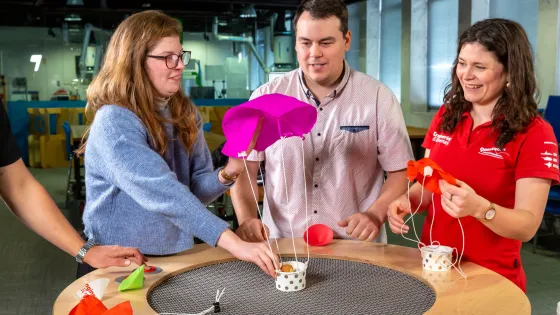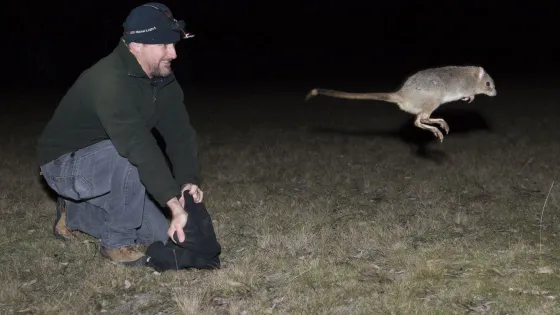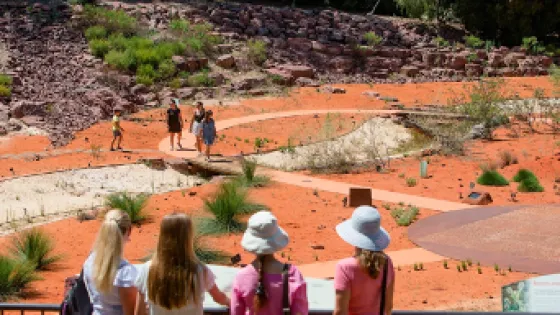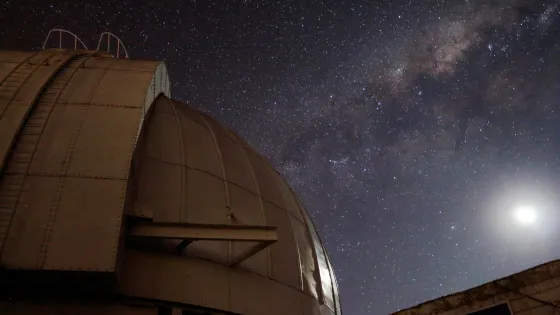In-depth work-integrated learning opportunities at CPAS
CPAS offer diverse work-integrated courses to ensure students graduate with real-world science communication skills, professional networks, and pathways to employment. Embedding learning in authentic, real-world environments in partnership with some of Australia’s leading science communication organisations gives our graduates a head start in their science communication careers.
Two internship model courses are offered as part of the Master of Science Communication:
- 6-unit Science Communication Internship (SCOM3004 undergraduate / SCOM6004 postgraduate) – contact the Convenor Dr Will Grant for placement opportunities.
- 24-unit (12 + 12) Masters level SCOM8004 Science Communication Fieldwork Placement, combining a work placement with teaching and assessment. SCOM8004 placements are competitive with applications required the year prior to study – visit the course page and/or contact Dr Graham Walker for application details.
Masters students undertaking SCOM8004 can choose from a range of host organisations listed below. Students commit approximately 520 hours over the year including working at the host organisation, independent study (including assessment tasks), and lectures and workshops at ANU. Please note exact activities may vary slightly from year to year based on priorities of the host organisation.
SCOM8004 Science Communication Fieldwork Placement opportunities
- Questacon – The National Science and Technology Centre
- Mulligans Flat Woodland Sanctuary
- Australian National Botanic Gardens
- Mount Stromlo Observatory (ANU)
Read more about each of the placement opportunities below.
Questacon – The National Science and Technology Centre

Join the team at Australia’s national science and technology centre! Work with a range of Questacon teams responsible for delivering science engagement experiences in the centre and around Australia. Gain skills and experience in program delivery and facilitation, research and evaluation, exhibition development, teacher professional learning, corporate affairs, and special projects. You will typically cycle through a range of placements giving a smorgasbord of science communication and education experiences – and valuable networks. Note this placement replaces the Questacon Science Circus which is not offered in 2023.
Mulligans Flat Woodland Sanctuary

Work on the front line of conservation and environmental communication at Mulligans Flat – an experimental sanctuary combining species reintroduction, habitat rejuvenation, innovative community engagement, and… bettongs! In-depth placements at Mulligans give you opportunities to develop new initiatives, run programs with schools and the community, engage with local Aboriginal custodians, conduct program and audience research, and operate and develop programming for the Wildbark Visitors Centre.
Australian National Botanic Gardens

Inspire and connect people to Australia’s diverse plants, ecosystems and conservation stories at the Australian National Botanic Gardens. The Gardens grow the world’s most comprehensive display of Australian native plants providing an inspirational place for research, conservation, learning, quiet contemplation and recreation. 500,000 people visit annually enjoying education programs, public programs, community engagement and events. This placement gives students authentic, real-world opportunities to evaluate and run programs, develop new initiatives, engage with diverse audiences and communicate science and research projects. Exciting developments at the Gardens opening in 2023 is the Ian Potter National Conservatory, which will be a showcase for tropical Australian native flora from the far north and islands, including rare and threatened species. Also coming soon is a new purpose-built National Seed Bank to help safeguard Australia's unique flora for generations to come.
Mount Stromlo Observatory (ANU)

Placements at Mt Stromlo allow you to develop astronomy, astrophysics, and space communication skills while engaging with schools, tourists, researchers, and the Canberra community. Work in a team running telescope viewing nights, online programming, Dark Sky Initiatives, Aboriginal and Torres Strait Islander Astronomy, and special events like Satellite Selfie or setting the Guinness World Record for stargazing. You might help develop exhibits in the Visitor Centre or conduct research to improve programming and better understand the observatory’s diverse audiences.
